-
Posts
402 -
Joined
-
Last visited
-
Days Won
2
Content Type
Profiles
Forums
Blogs
Gallery
Events
Store
Posts posted by Bison
-
-
Hello Rob
Yes, Léon Chalin was a medal maker in Paris. His workshop was 12 rue de Crussol. He was registered from 1895 to 1929.
The other mark (C and L superposed) is assessed to be another Léon Chalin's mark. But I have no clear evidence of that. This is only an assumption.
Regards
Bison
0 -
And the mark itself.
It is a similar external shape to that shown on post #32-34 but there is definitely different internal markings. While it is difficult to tell I believe the central mark resembles an upside down arrow.
I am hopeful that someone more knowledgeable can identify this maker. Any thoughts??
Regards,
Rob
Hi Rob
Hi everybody
First I apologize for having being absent during the last two months. I hope I could participate to this thread a little more now.
The mark shown by Rob is of Léon Chalin : L an anchor C. The mark is inversed, it occurs sometimes.
If you reverse the pic, you can see clearly the mark :
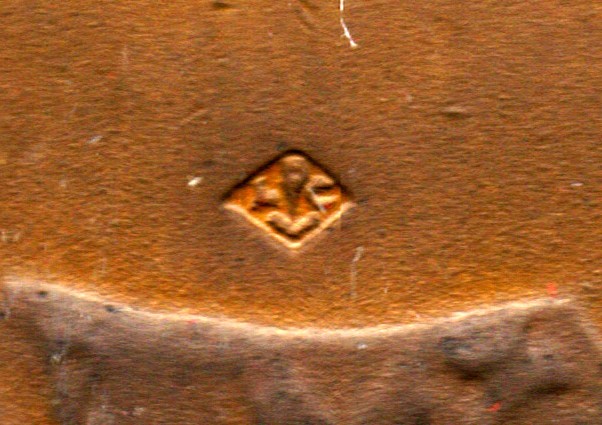
Regards
Bison
0 -
Hi Chris,
The two books are independent.
The Hass book remains THE basic, but nowadays very scarce and hard to find.
The Patrick Binet's book tooks again all topics presented by Hass, but includes new developements especially about the bars, the manufacturers and their marks.
It has also a comprenhensive chapter about "La Médaille d'Outre-Mer" and its bars.
This new book is more "collector oriented", let's say.
My recommendation is to have both, if you could...
Regards
Bison
0 -
And here are the different silver bars authorized on the current model without any dates on the reverse. Here is a private maker's one.
Sorry Tim, the gilt bar "Algérie" is not for this medal, but for the campaign medal "Commémorative des Opérations en Afrique du Nord".
http://gmic.co.uk/uploads/monthly_06_2010/post-2068-127635174856.jpghttp://gmic.co.uk/uploads/monthly_06_2010/post-2068-127635176219.jpg
0 -
1939 - 1945 (left: Monnaie de Paris made before 1956, right: Monnaie de Paris made after 1956)
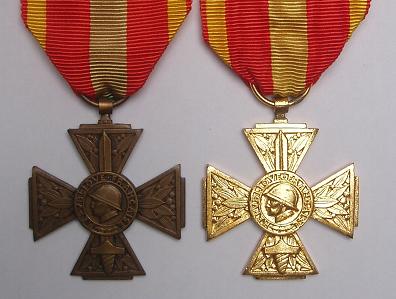
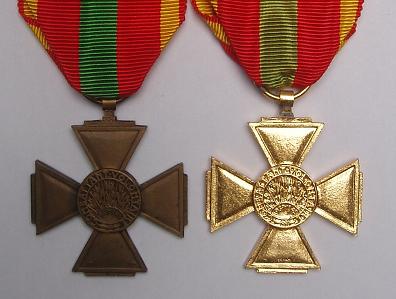 0
0 -
Hi
A quick contribution, to show the different sizes and shape:
1914-1918 (left: private manufacturer, right: Monnaie de Paris)
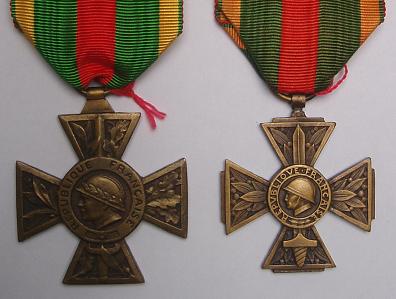
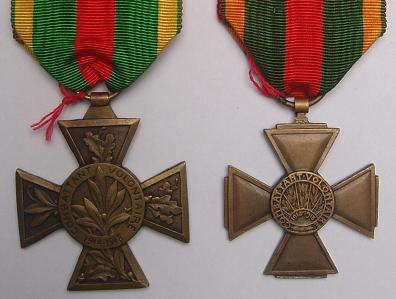 0
0 -
A new book about "La Médaille Coloniale" will be issued at the end of June 2010.
Writen in french, this book is mainly dedicated to collectors of "La Médaille Coloniale", but gives also a lot of relevant information about French medals and bars manufacturers, marks and details.

You can have a look on it here: http://editions.pb-co.fr/coloniale/coloniale.html and you could browse some pages of this very good book. You can order it directly on this web site.
I have contributed to a short part and I encourage all those who are interested in collecting French medals to have it in his personal documentation.
(Note I will not earn one penny or a cent with this advertising.)
Yours
Bison
0 -
I think that many people is interested in reading and understanding these small marks.
Unfortunately, there is no dedicated documentation to Orders, medals and decoration makers.
Before resuming this topic, I would like to inform you of the publication of a book at the end of the month about "La Médaille coloniale" - collector's guide. It is in french and you can find a lot of relevant information about marks and manufacturers.
I have the pleasure to contribute for a small part to it.
You can have a look on it here: http://editions.pb-co.fr/ and you could see some pages... and order it.
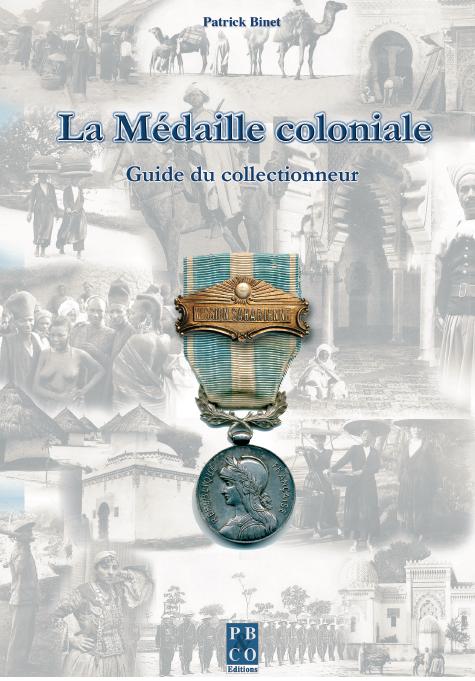
The author is a friend of mine and I recommend all collectors of French medals to have this book.
Yours
Bison
0 -
Yes I am 90% positive (we never could be 100%).
I think it is Raymond Juif's mark, with no many risks.
Yours
0 -
Hi Tim
For Lemaître, it is not a bag of money or a vase
 It is a GRENADE,a good old one, with flames...
It is a GRENADE,a good old one, with flames... 
For The mark of Georges Aucoc, it happens that the first strike missed, so the jeweller made a second over the first missed one.
0 -
Hi Tim,
This is a good example of a Cornucopia + 'BR' for Bronze.
You can also find 'BRFL' or sometimes 'BRFLO' for Florentine bronze (a yellower colour 85% copper, 25% zinc)
During WWII, some medals and bars were struck with a cornucopia + 'MD' for 'Métaux divers' = Miscellaneous Metals... due to the lack of copper and others.
0 -
Hi Tim
This a good point.
- Gold 920 ('1'cornucopia , or double reversed) = 1921 - 1997
- Gold 916 Single cornucopia without figure = 1880 - circa 1913
- Gold 916 (cornucopia '1' or double) = circa 1903 - 1997
- Gold 840 Cornucopia '2' (or double) = 1921 - 1997
- Gold 750 Cornucopia '3' (or double) = 1921 - 1997
All cornucopias with 'O' engraved, but for Gold 750.
From 1997, the mark has changed.
Yours
Bison
1 -
Another before shift:
A double cornucopia with "3", for gold 750:

We can find the same with "1" for gold 916 (or 920 but with cornucopias upside down, or a single one but after the "1"), and "2" for gold 840.
The difference with marks for silver is the letter "O" (OR = GOLD) graved on the cornucopia, but only for "1" and "2", because "3" doesn't exist for silver.
Yours
:whistle:
1 -
Hi tim
You can use a peg leg as a sword... but it is still a peg leg!
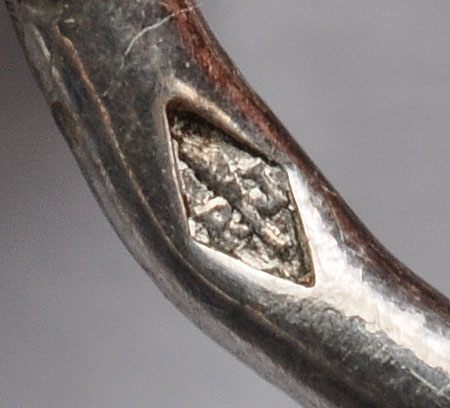
(picture made by g_deploige who is also a 'connaisseur')
Yours
0 -
Hi Tim
This mark, without any doubt, is "Lemaître - Fils" ans was used around 1922 - 1937.
'Lemaître' is an old jeweller company, which started circa 1836, but with different succesive marks.
Yours
0 -
We find also the cornucopia with a '2'. This mark stands for silver 800 and was used from 1921 to 1997.
Single cornucopia:

Double cornucopia:

That's all folks for tonight.
Regards
1 -
... and sometimes, one can find the cornucopia without a small 'A' on it. Don't be afraid, it is silver. Why the 'A' is not present? I don't know...
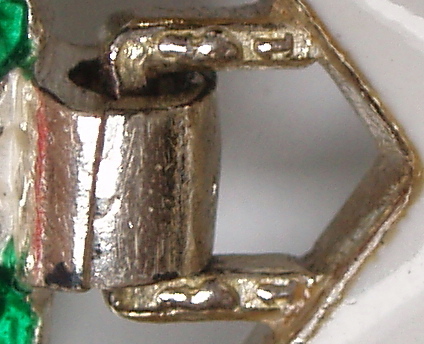 1
1 -
Another with '1*' standing for silver 925, used from 1973 to 1997. Some recent 'replacement' of old medals or bars are punched with this mark and sometimes, it is the only way to know that. We cannot say 'copy', because they are issued by the official manufacturer... but sometimes far later.
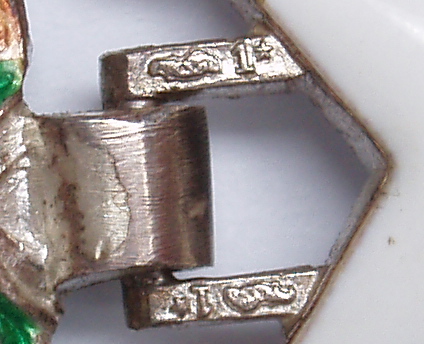 1
1 -
Hi Tim
There are a lot marks from the Monnaie.
As a start, here is a cornucopia and a '1'. This mark is for Silver 950. It was used from circa 1906 up to 1972.
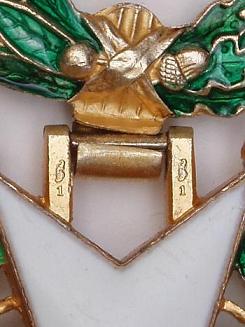
Another, with the double cornucopia, and you can see clearly the small 'A' on them, standing for ARGENT / Silver
 1
1 -
Here's one previously posted by another collector in an old thread. He shows the mark (on the suspension ring) of the letters "R" "J" bordering an upright sword. Could it be the same here? Any other examples with this looping style wreath that has a known maker mark?
Hi Tim
This is the mark of the jeweller Raymond Juif : <R - a peg leg - J>. It is not a sword...

You will find many variations of the Légion d'honneur made by private jewellers. Sometimes, they do not wear the mark of the manufacturer.
0 -
I fully support this thread, I far as I could.
However it is a very very challenging topic, where nothing is very clear, even for so-called experts.
Everything which could bring a light will be a step forward for all serious collector.
We have started to do that in France, and we are a few to really pay effort in this.
Many thanks also, for your tremendous pics and overall for your interest of this (and your open mind in that issue).
Sincerely
Bison
0 -
No it is a secret, it will not come out of the Net.

The best, too
Bison
0 -
Thank you!

The pleasure is mine in sharing knowledge about our hobby.
Let me tell you another thing that few collectors know, even in France.
In the cornucopia, if you watch it very carefully, you will see a letter. In your case there is a microscopic 'A' for 'ARGENT' = Silver.
At the beginning you will burn your eyes to catch this detail, but with a little training you will find it easily.
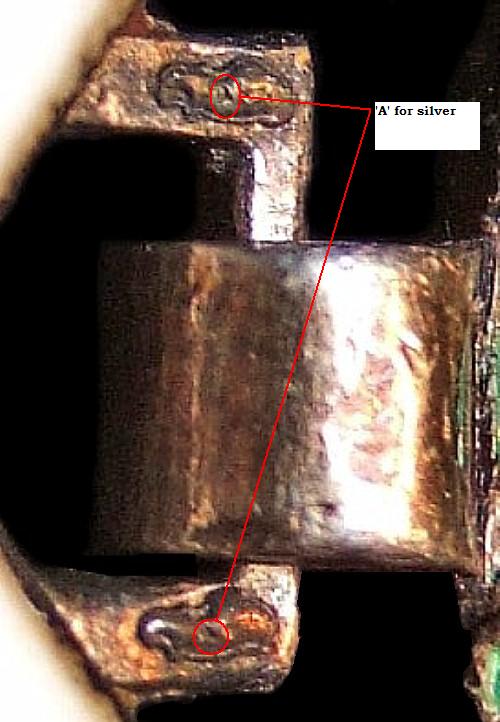
On other medals you could find a 'O' for 'Or' = Gold. Therefore one should have a tremendous magnifier for examining this kind of detail... but so important at the end!
The reason is that the hallmark of la Monnaie de Paris is both an official guarantee and a maker's one. That is why you will never find a cornucopia and a head of hoar or eagle (or both) on the same piece. These two last marks of guarantee are exclusively dedicated to private jewellers. In fact they are the evidence they have paid the taxes!
However, a part of the medal could be made by a private contractor for la Monnaie. In this case one part is privately marked, and the other part is marked by La Monnaie. For example, it is the case for the 1st type of the 'Médaille Coloniale' which coin was punched with a cornucopia, and the beliere (I don't know if it is the right english word, but it is in French) was privately punched with 2 marks, a head of hoar (the hallmark) and a diamond with the symbols of the jeweller.
Moreover, when all the parts are made and assembled by La Monnaie, there are two cornucopias. This is the case for your Légion d'honneur here.
Yours
Bison
0 -
Whats the mini?
Hi Noor
The mini seems to be the Order of Saint Gregory (Civilian)... but I could be wrong.
0




Bronze BWM collection
in Great Britain: Orders, Gallantry, Campaign Medals
Posted
Hi
I get this medal this week and I am very happy with it!!
Is there any chance to know the name of the Chinese #10107??
http://gmic.co.uk/uploads/monthly_03_2011/post-2068-0-19417000-1299871106.jpghttp://gmic.co.uk/uploads/monthly_03_2011/post-2068-0-97643300-1299871121.jpg
Thanks in advance for your help.
Aye
Bison